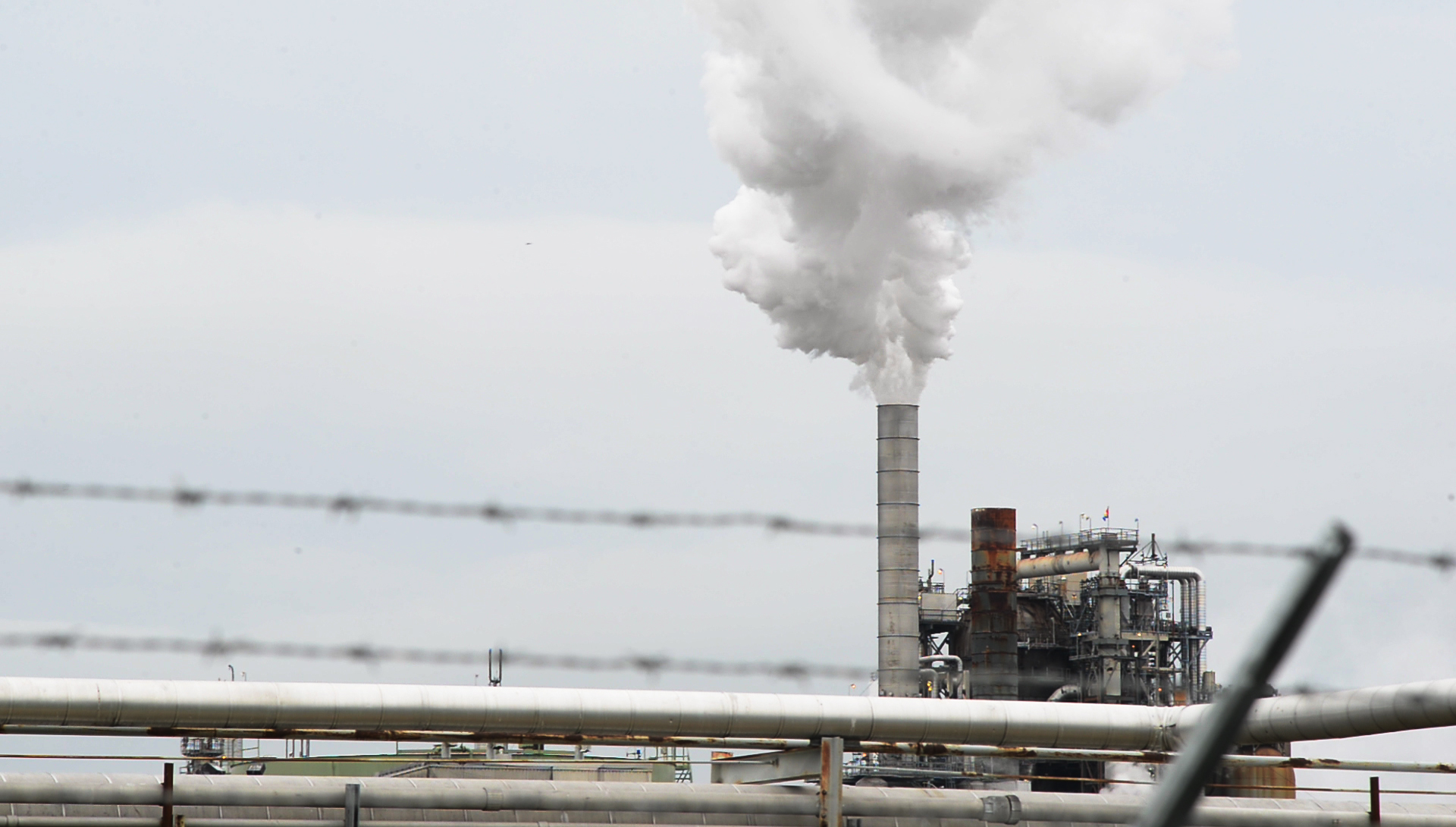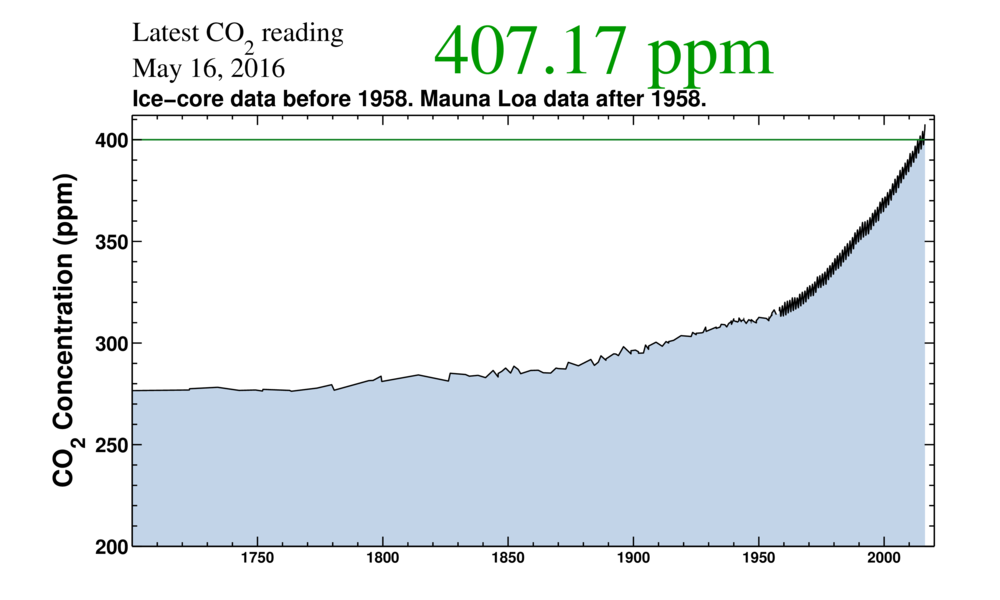By Dillon Thomson and Max Wilbert / Deep Green Resistance Eugene
Also available in French: Le mouvement pour le climat progresse-t-il ?
No oil trains would be coming through today.
There were more than 200 people on the tracks, some physically locked in place, others suspended in the air, and most simply sitting in their tents, holding the space. The blockade was up and running. Fifty State Troopers and County Sheriffs talked among themselves, and then left, leaving only a few officers to keep an eye.
We stopped the trains for several days. Meanwhile, other groups blocked entrances to the refineries, gathered on the water, and held marches. The police would be back less than 36 hours later, arresting more than fifty activists and opening the rail line once again.
Meanwhile, the refinery kept belching its toxic smoke into the sky. We were on the front lines of Break Free Pacific Northwest — and it wasn’t enough.
The Break Free campaign is an exciting development in the movement to stop climate change. Resistance is getting more serious with more focus on coordinated efforts and more people willing to face criminal charges. There are hundreds of good people involved in these struggles. Many of them are old friends and allies. The spirit of resistance at these encampments is strong.
But it’s not enough. Fossils fuels are woven into every aspect of the global economy. We are surrounded by its mark almost everywhere we go — from the paint on the walls to our toothbrushes to the steel that is made with coal and used in almost every vehicle, building, and appliance. Even dozens of coordinated actions won’t put even a dent in this industry if they are only able to slow work for one or two days at a time. This isn’t to say that these blockades are a bad idea, but rather that, on their own, they are not enough.
If we are serious about stopping climate disruption, our movements must consider the strategies and tactics of groups such as the Movement for the Emancipation of the Niger Delta (MEND), who—after a decade of ineffective non-violent resistance met with ruthless repression—turned to sabotage and have single-handedly reduced as much as 40% of the oil production of Nigeria (Africa’s top oil producer).
As recently as last week, a MEND spinoff group blew up two off-shore oil platforms and a major pipeline, knocking out 165,000 barrels of production capacity and four million gallons of daily refining. That’s more than half of Nigeria’s total fossil fuel industry. In February, a single sophisticated underwater attack took more than 250,000 barrels of production offline. These people are serious. They have reduced the entire fossil fuel industry of their nation by half within a period of a few months.
Compared to the impacts of a temporary, predictable 2-day blockade, this kind of strategic sabotage can be more decisive—especially if it were coordinated to affect multiple industrial targets at the same time.
Nonviolence has been a pillar of environmental resistance and it is a strategic tool that, if used effectively, can be extremely powerful. To see the truth of that, one must only look at the history of nonviolent resistance in places like the Philippines, the Baltics, and the United States. Our nonviolence must be waged in such a way that builds our movements larger and stronger while simultaneously undermining the ability of the fossil fuel economy to function.
Simply put, we need actions like Break Free, but more often and with increasing tactical escalation. The seriousness of the ecological crises we face is dire, and time is extremely short. Despite all the resistance up to this point, carbon levels are higher year after year. What we’re doing isn’t working. We believe total dismantling of the fossil fuel economy using whatever means necessary is the only way to reverse this.
Another major pillar of the mainstream environmental movement is advocacy for “renewable technologies”. This call for 100% renewables is central in the Break Free messaging, and in the broader messaging of the climate movement. But what most advocates fail to recognize is that these industrial technologies have industrial-scale impacts. The tailpipe emissions may be clean, but the extraction, distribution, and manufacturing certainly aren’t.
To some, this may seem like quibbling, but if renewable technologies are expanded to the point where they can power the global economy, the devastation wrought by them will be nothing to quibble over. The irony of environmentalists advocating for a new industrial revolution has been somehow invisible. Those who claim to defend forests, mountains, and oceans but also support technologies which require widespread mining, global supply chains, and massive production facilities are deluding themselves. A solar panel factory costs $100 million; this is not a community-scale technology. Like the imperialism and resource extraction that make it possible, it is global.
Despite Germany’s supposed renewable energy miracle, the country’s emissions have barely declined since its “green” program went into effect, and this minor reduction is largely related to some very creative accounting that says cutting down forests in the southeastern United States, turning them into pellets, and shipping them to Germany to be burnt as a power source is somehow “carbon neutral”. In theory and in marketing, renewables are a perfect solution. In practice, they are more of the same. The renewables industry is dominated by corporations like General Electric. Do we really believe that these profit-driven entities are paragons of environmental responsibility?
Here’s a counter-narrative: people around the world make sacrifices for the sake of the planet and future generations. Some dedicate their lives to building and advancing nonviolent movements stronger than anything seen before. Some choose to go underground and risk their lives to literally destroy the ability of industry to function. Others fight in other ways.
The movement isn’t sidetracked by “renewables”. Instead, it recognizes that we can only live from what the land gives freely. Deep reverence for the land underlies the movement, and solutions are based on hyper-localized living and a low-energy lifestyle.
In this narrative, we win in time to save the planet — and our victory isn’t a Pyrrhic one.
To turn the tide, we believe in direct resistance — but a smarter, more strategic, more decisive resistance that doesn’t depend primarily on trying to convince the masses or petition the government (although these methods are still important, and should be pursued in parallel). Instead, this strategy advocates for the formation of highly organized clandestine groups to take the onus of resistance, sabotaging critical nodes of industrial infrastructure to cut the arteries of global capitalism.
The information in this strategy is derived from military strategy and tactics manuals, analysis of historic resistances, insurgencies, and national liberation movements. The principles laid out within these pages are accepted around the world as sound principles of asymmetric conflict, where one party is more powerful than the other. If any fight was ever asymmetric, this one is. These strategies and tactics are taught to military officers at places like the Military Academy at West Point for a simple reason: they are extremely effective.
When he was on trial in South Africa in 1964 for his crimes against the apartheid regime, Nelson Mandela said: “I do not deny that I planned sabotage. I did not do this in a spirit of recklessness. I planned it as a result of a long and sober assessment of the political situation after many years of oppression of my people by the whites.” We invite you to read this strategy, and to undertake that same long and sober assessment of the situation we face. Time is short.
Read the strategy: Decisive Ecological Warfare
(in English, Russian, Arabic, Turkish, Indonesian, Russian, French, Italian, Polish, Portuguese, or several other languages)
Post photos by Max Wilbert







Also see Dillon’s presentation at Direct Action Spokane’s first public event to organize opposition against coal, oil, & gas trains in the Pacific Northwest.